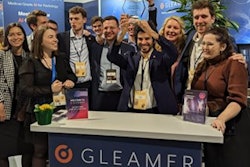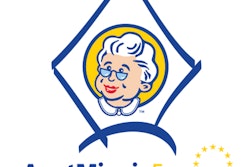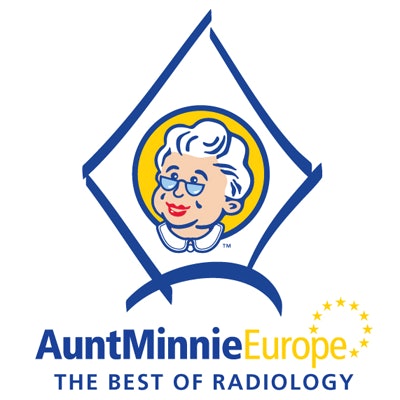
Excitement is building in the EuroMinnies, AuntMinnieEurope.com's annual awards scheme. Today we can reveal the list of finalists. In the four "people awards," the eight candidates come from eight different European nations, providing confirmation that talent is spread right across the continent.
After the first round of voting, the expert panel comprising members of our editorial advisory board, regular columnists, and previous winners and runners-up has now agreed on 18 finalists in nine categories, including the three industry prizes.
The full list of semifinalists was released on 14 December, and it was based on nominations submitted in November 2022 by subscribers of AuntMinnieEurope.com. One winner will now be selected for each category by our judges. The winners will be announced in February, and the trophy presentations will take place in March.
Most Influential Radiology Researcher
Prof. Wiro Niessen, principal investigator, Biomedical Imaging Group, Erasmus MC, Rotterdam, the Netherlands
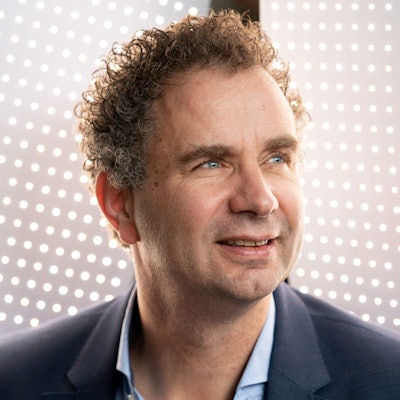 Prof. Wiro Niessen.
Prof. Wiro Niessen.Prof. Wiro Niessen lists his main research interests as follows: to develop and implement artificial intelligence (AI) methods for the integrated analysis of clinical, imaging, and genetic data; to improve the quality and acceptance of AI methods by ensuring they are developed and validated on multicenter data; to aid development and validation of quantitative imaging biomarkers and optimization of radiomics pipelines; and to support the analysis of large multicenter population studies.
The best link to his team's publications is on google scholar, Niessen said.
Curiosity is a vital quality for researchers, he noted. "I think a main driver for innovative research is the interest to really understand what is going on."
Determination, combined with flexibility, are also essential. Science is increasingly about teamwork, and it is important to collaborate and communicate well with other scientific disciplines and with the public, he added.
"If you love to understand things, if you like technological innovation, if you are not worried about uncertain outcomes, the research field is one of the nicest areas to be in," he said. "You can work in multidisciplinary teams, advance the frontier of knowledge, and thus make an impact."
Be open and collaborate, he urged. "As a team and with a consortium you can achieve so much more than alone," he added.
From 1 February 2023, Niessen will become dean at the Faculty of Medical Sciences of the University of Groningen and board member of the University Medical Center Groningen (UMCG) in the Netherlands. He will also have a professorship in AI in medical imaging and health at UMCG, and in the next two years, he will be involved in finalizing the PhD trajectory of a number of his Erasmus MC doctoral candidates. Until 31 January 2023, he will continue to be scientific lead of Quantib, which creates AI-driven radiology software.
Prof. Karen Rosendahl, professor and consultant pediatric radiologist, UiT The Arctic University, Tromsø, Norway
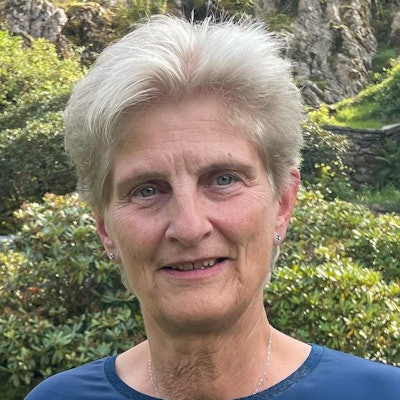 Prof. Karen Rosendahl.
Prof. Karen Rosendahl.Prof. Karen Rosendahl oversees a team of around 20 researchers. Her current projects include imaging in juvenile idiopathic arthritis, developmental dysplasia of the hip, skeletal dysplasia, osteoporosis, abusive trauma, and whole-body MRI (see website).
"For a researcher, the most important personal qualities are curiosity -- a need to search for the 'truth' and having the courage to do so -- but also resilience and kindness," she told AuntMinnieEurope.com.
Rosendahl, qualified in medicine at the University of Bergen, Norway, in 1980. She was appointed consultant pediatric radiologist in Bergen in 1990, and she obtained her doctoral degree in 1995 and has held a professorship in pediatric radiology since 2003. She has had a special interest in musculoskeletal (MSK) radiology for the past 30 years and has published more than 180 scientific papers in international, peer-reviewed journals, predominantly on MSK topics. She has written 10 book chapters and has supervised (or is supervising) 15 doctoral fellows.
Amongst the current generation of radiology researchers, she admires Prof. Paolo Toma at the Department of Diagnostic Imaging, Ospedale Pediatrico Bambino Gesù in Rome, for his calm attitude, wisdom, and open mind. She also admires Dr. Catherine M. Owens for her significant achievements, both nationally at the Great Ormond Street Hospital for Children in London, and internationally, for the pediatric radiology community.
"My advice for colleagues who are considering conducting research is to liaise with a good mentor, and together with the clinicians, figure out which questions need to be answered in order to provide a correct diagnosis," she said. "Staying focused, involving and including others, and behaving well is my best advice for achieving success."
Most Effective Radiology Educator
Prof. Christian Loewe, head, Division of Cardiovascular and Interventional Radiology, Medical University of Vienna
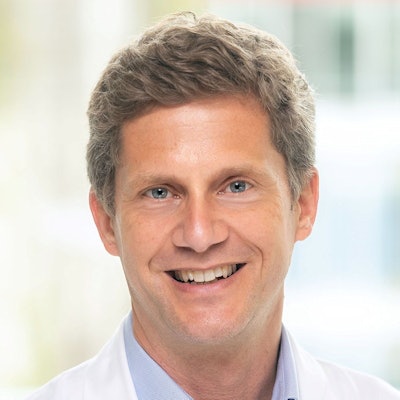 Prof. Christian Loewe.
Prof. Christian Loewe.Prof. Christian Loewe is a member of the Steering Committee of the European School of Radiology (ESOR). "ESOR has become a real trademark for European education in radiology at the highest level, and it's amazing to see how many activities are ongoing and how Prof. Vilgrain is continuously expanding its activities," he said.
He is currently organizing a case-based teaching course for cardiac MRI on a local basis, but the plan is for it to become a European-wide initiative. The MRI course follows on from the successful cardiac CT course, Loewe explained. He also helped to establish a young radiologists' program at the annual meeting of the Austrian Roentgen Ray Society and is joint organizer of the ESR's Cube, which offers hands-on training in interventional radiology.
"The most important qualities of an effective educator include empathy, enthusiasm, and self-reflection," Loewe said. "Empathy is of high importance while interacting with the audience -- independent from their size. We should always put the people we educate in the center -- not us as the educators."
He thinks educators must continuously question themselves and adapt their educational tools. Good education is also "some kind of show," he added. "The wrapping, the style of presentation is at least as important as the content itself. It's essential to convey our enthusiasm about radiology."
He is keen to see improvements in, and expansion of, training in interventional radiology and cardiovascular radiology, but he admits both these areas are "continuous battlefields with other specialties, and we can only remain in a leading position as long as we are able to provide radiology on the highest level." Clinical oncology is also developing fast, and the role of radiologists in multidisciplinary conferences is of utmost importance, according to Loewe.
At ECR 2023, he will host the Image Interpretation Quiz and is involved in other sessions. "And yes, the Cube is on again, and Max de Bucourt and myself are just happy and proud!"
Prof. Marie-Pierre Revel, head of radiology, Hôpital Cochin, Paris
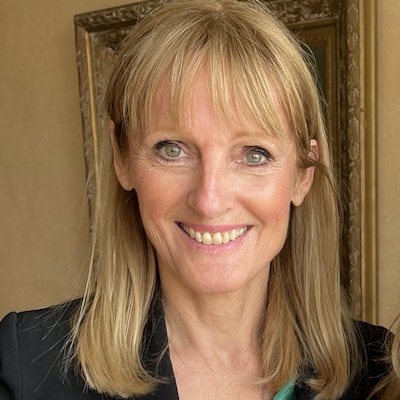 Prof. Marie-Pierre Revel.
Prof. Marie-Pierre Revel.One of Prof. Marie-Pierre Revel's current projects is to evaluate whether artificial intelligence (AI) can increase the performance of residents in the interpretation of chest radiography. "We observed that AI transiently increases their performance, but when residents are no longer assisted by AI, their performance decreases and becomes equivalent to that of those who were not exposed to AI."
She thinks these are the essential qualities for an effective educator: Select the most important messages and avoid giving complex presentations that "allow you to shine but do not give the audience a clear idea of the problem"; show striking cases and give details about your own misinterpretations to prevent colleagues from making the same mistakes; and share your enthusiasm because "radiology is extraordinary in its ability to resolve complex, even critical situations -- we save lives!"
Training in lung cancer screening (LCS) requires more attention and investment, according to Revel. On 9 December 2022, the European Council updated its screening recommendations to include lung cancer among the screenings to be implemented. "This will require the involvement of many radiologists who must be trained in LCS to ensure that LCS is performed to the same level of quality as the trials that have proven its value," she said.
Revel is past president of the European Society of Thoracic Imaging (ESTI). She is currently head of ESTI's certification program based on e-learnings, workshops, and webinars.
In 2023, her main educational priorities are related to the diagnosis and management of lung nodules. She will give two lectures during the Chest Radiology Day in Tel Aviv on 13 February, and she is coordinating European School of Radiology (ESOR) online foundation courses courses on chest radiography (15 February) and on lung cancer, hemoptysis, and cystic lung diseases (10 May).
At the Future of Medical Imaging (FuMI) Meeting in Berlin on 27 April, Revel will speak about LCS with low-dose CT in women, and at the Franco-Tunisian Congress of Radiology in May, she will give a talk on chest emergencies.
Radiology Rising Star
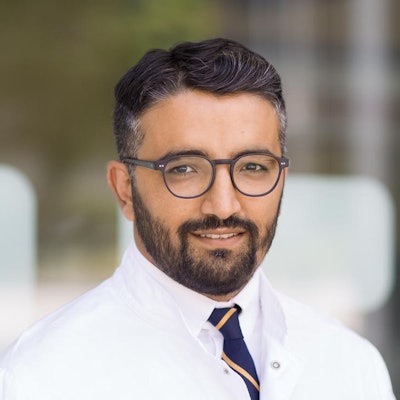 Dr. Saif Afat.
Dr. Saif Afat.Dr. Saif Afat, University Hospital of Tuebingen, Germany
Dr. Saif Afat has worked as an attending radiologist at the University Hospital of Tuebingen since January 2022.
Born in Baghdad, he qualified in medicine in 2014 at Friedrich-Wilhelms-University of Bonn. After training in neuroradiology at RWTH Aachen University, he began his residency in December 2016 at Tuebingen. He said he particularly enjoyed working on CoRad-19, a digital teaching tool created for medical students by the German Radiological Society during the pandemic. He is a board member of several committees and represents Germany on the ESR's Radiology Trainees' Forum.
"Radiology is an exciting and rewarding profession," he told AuntMinnieEurope.com. "I love that you have many different opportunities to choose your preferred specialty. Being a radiologist enables me to be at the forefront of technological advancements and allows me to be part of pioneering future research."
To attract the best and the brightest, medical students must understand the pivotal role that radiology plays in medicine and how it is innovation-driven, he said. "We should show students our excitement about radiology and its fast-paced and clinically significant applications. Mentoring programs should be the centerpiece in this process, in which we actively raise awareness of our field."
Afat has initiated several projects to develop low-dose CT protocols. Since 2021, he has led the Advanced Imaging Techniques (AIT) MRI research group at Tuebingen, and he is part of the RACOON Radiological Cooperative Network, which collects imaging data from COVID-19 cases.
"We are currently exploring AI-assisted image reconstruction technology that uses convolutional neural networks to accelerate MR scans," he explained.
In 2023, he hopes to obtain the rank of assistant professor ("Privatdozent" in German). Clinically, he is interested in oncologic imaging. One of his current projects is about how texture analysis using AI-based techniques can improve survival outcomes in oncology.
Dr. Martina Pecoraro, Sapienza University of Rome, Italy
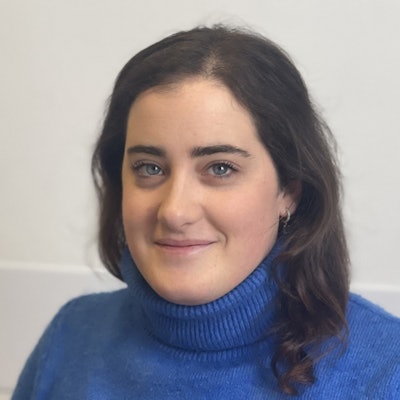 Dr. Martina Pecoraro.
Dr. Martina Pecoraro.As a doctoral student, Dr. Martina Pecoraro is involved in several genitourinary (GU) research studies, such as testing different prediction models for the early detection of prostate cancer, using MRI and circulating microRNAs and comparing a range of pathways in terms of clinical "net benefit".
"The aim is to integrate data, using network analysis approaches, to consider the oncologic risk of a patient, not only the diagnostic accuracy of a specific test," noted Pecoraro, who is also investigating the role of MRI and Prostate Imaging Recurrence Reporting (PI-RR) score compared to PSMA-PET/CT for detection of cancer recurrence.
She is a member of the ESR's Radiology Trainees' Forum board and the European Society of Urogenital Radiology's junior network. At Sapienza, she is involved in teaching courses on bladder and prostate MRI, organized by her mentor Prof. Valeria Panebianco. She won a prize for the best GU research presentation at ECR 2022.
Pecoraro said she loves the "immense and comprehensive amount of pathologies that the radiologist has to face on a daily basis" and "how medical imaging is being transformed by technological innovation." She thinks mentoring by inspiring individuals -- "trading ideas in a safe space to sustain long-term relationships and mutual trust" -- and participating in international congresses are central to the profession's future.
"The exploitation of AI-powered tools can improve training by development of personalized curricula based on each student's specific needs using profiled digital teaching file databases and case-based flow assignment and learning," she said, adding that virtual mentors, optimization of the time spent with teachers, and flipped classrooms can promote student involvement and personalized education.
In 2023, she plans to work on ongoing research projects and initiate new ones. She hopes to stimulate trainees -- "to have a positive impact on their learning experience, and to improve as a team member for co-workers and friends."
Most Influential Radiographer
Luis Lança, associate professor, Lisbon School of Health Technology (ESTeSL), Portugal
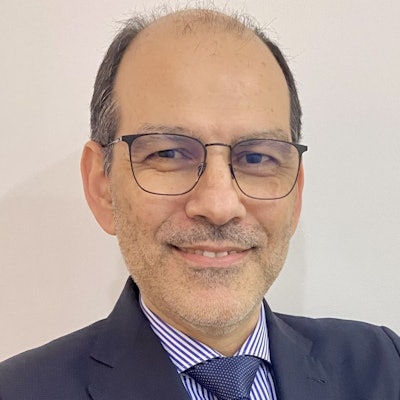 Luis Lança.
Luis Lança.Luis Lança moved from clinical practice to full-time radiography teaching in 2000, and he has dedicated the past 22 years or so to his students. His areas of special interest are image quality, dose management, and the use and expectations of artificial intelligence (AI) in radiography.
He obtained a radiography degree at ESTeSL in 1991, and he worked at Egas Moniz Hospital in Lisbon as a diagnostic radiographer for almost 10 years. Lança obtained a Master of Science degree in medical education from the Faculty of Medicine of Lisbon in 2004 and completed his doctorate in health technologies from Aveiro University, Portugal in 2011. He teaches about radiography research methods and has supervised Master of Science and doctoral student thesis and participated in external examiner committees (see orcid.org and LinkedIn.com).
From March 2013 to January 2017, Lança took over the administrative and organizational responsibilities as vice president of ESTeSL, focusing on performance development and quality management. He was also program director of the medical imaging and radiotherapy Bachelor of Science degree program until 2017.
In June 2018, he took an academic post as associate professor at the Singapore Institute of Technology, where he was program director for the diagnostic radiography and radiation therapy Bachelor of Science degree programs. In June 2021, he returned to Portugal as associate professor at ESTeSL/IPL.
"The continued collaboration between radiographers, radiologists, medical physicists, industry, and other healthcare professionals helps to raise the profile of the radiography profession in Europe," he told AuntMinnieEurope.com. "Radiographers have been making great progress and have been able to produce professional knowledge using science to better provide care that meets the patients' needs."
He said he always looks for active educational approaches that can facilitate student involvement and motivate them. "International academic and research collaborations between the different healthcare stakeholders are one of my current priorities. Also, I would like to dedicate more time to my students, helping them to become independent and bridging academic knowledge and skills with real-world applications."
Titti Owman, medical research assistant, Lund University, Sweden
 Titti Owman.
Titti Owman.MRI has been Titti Owman's main occupation since 1983, and in 2017-2018, she was the first European radiographer to be elected president of the International Society for MR Radiographers & Technologists (ISMRT), a section of the International Society for Magnetic Resonance in Medicine (ISMRM).
Her areas of special interest are MRI safety, contrast agents, neuroradiology, and research/clinical work involving various field strengths. During the late 1980s, Owman worked for an MRI vendor in New York and was involved with applications, both clinically and internationally. She was one of the founders of Lund University's School of MRI, and in 1990, she helped open Sweden's first private MRI clinic.
She currently works on the radiology department's research board and the regional MRI safety committee and is a member of the national contrast agent committee and a founding member of Sweden's MRI safety committee. She helps to coordinate and prepare research studies, particularly MRI safety research and safety preparations and screening forms at various magnetic field strengths, from 7-tesla to 64mT scanners.
"Proper staffing for MR scanners is also something we are looking into," she noted. "It is also critical that we strive to create and keep a working environment that is safe for both patients and staff. No radiographer should have to work alone."
There is an enormous shortage of radiographers worldwide, she continued. "Our profession has an important role in both imaging and functional studies," she said. "We obviously need to train many more radiographers in general radiology, but at the same time we are going to need an increasing number of radiographers to become subspecialized."
In December 2022, she joined the MRI working group for the European Society for Magnetic Resonance in Medicine and Biology (ESMRMB) and the European Federation of Radiographer Societies (EFRS). "We are aiming to enhance collaboration between both organizations and to start up and create activities to engage and encourage European colleagues and radiologists to participate in educational activities and to share experience and knowledge."
Owman is organizing courses in MRI for radiographers and radiologists, as well as a neuroradiology course in Cyprus, and is helping to plan an international workshop on MRI safety to be put on by the International Society of Radiographers and Radiological Technologists (ISRRT) in 2023 or 2024.





